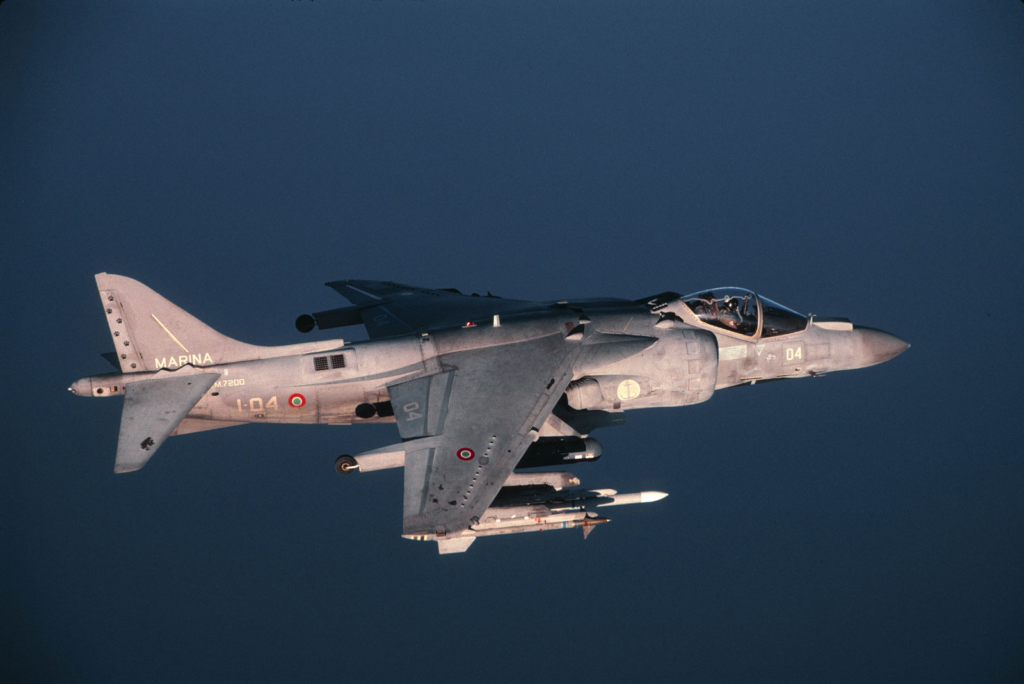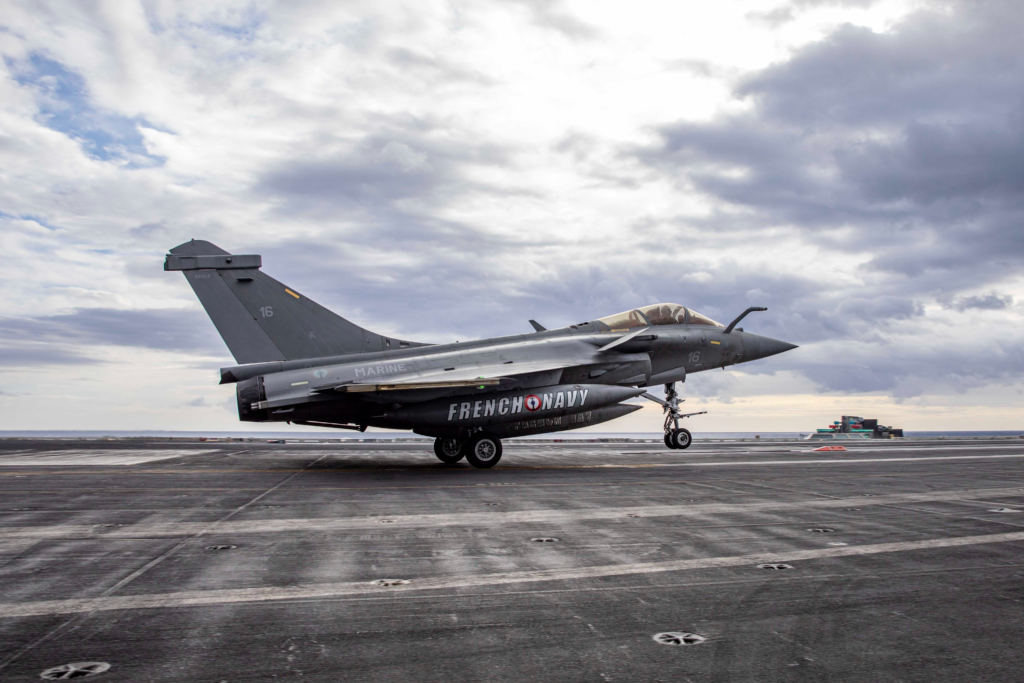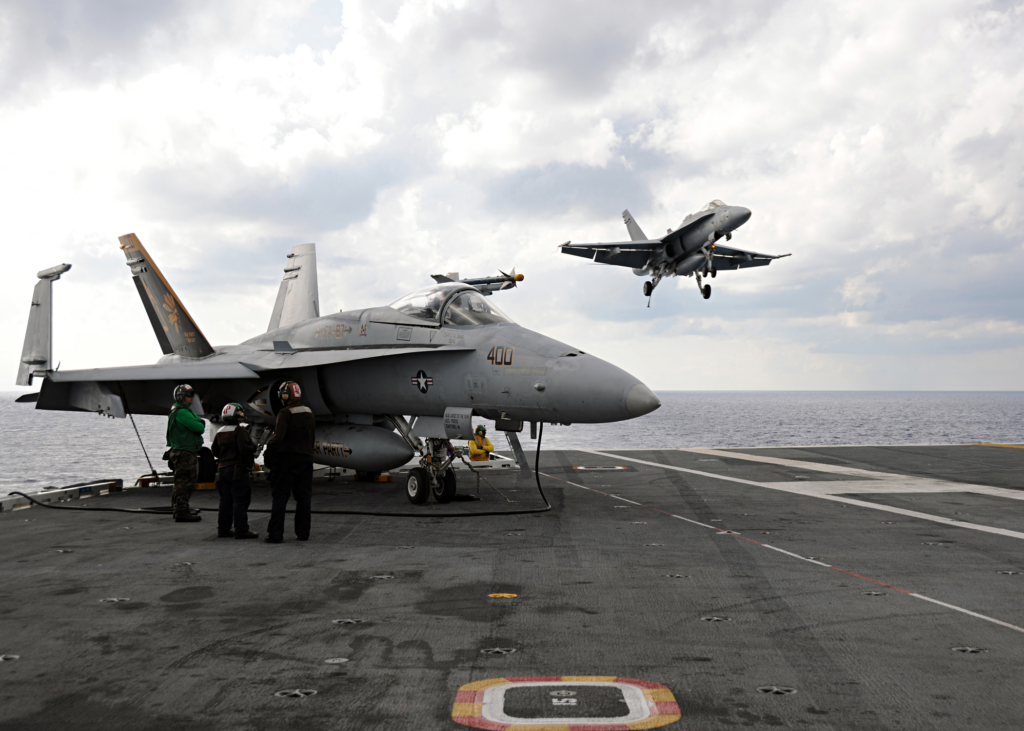Three NATO Carrier Strike Groups (CSG) demonstrated their commitment to the security and stability of the Euro-Atlantic Area during multicarrier operations while sailing in the Ionian Sea, Nov. 23, 2022. Throughout November, five allied CSGs will operate throughout the North Atlantic Ocean and Adriatic and Mediterranean Seas.
Demonstrating their shared commitment to the collective defense of the Alliance, George H.W. Bush CSG, the French CSG, and Italian Cavour CSG strengthened their ability to generate credible combat power throughout the Euro-Atlantic area while underscoring NATO solidarity, interoperability, and high-end capability.

“Displaying the awesome power and lethality the Alliance brings to the fight is one of the surest ways to deter aggression,” said Rear Adm. Dennis Velez, commander, CSG-10, George H.W. Bush CSG. “We are stronger when we work together, and operations like these highlight not only our interoperability, but our interchangeability with our partner and allies.”
Multicarrier activities demonstrate the coordination of dispersed allied and partner forces to train and operate in a joint, high-intensity security environment across all domains in the region.
“From the very beginning of our new deployment named ANTARES, we closely operate with Allies and share a common picture and situation assessment,” explained Rear Adm. Christophe Cluzel, commander, French CSG. “Multi-carrier operations are demanding and illustrating the very highest level of coordination. Keeping a non-escalatory posture, they enhance our ability to secure wide areas, to deter from any destabilization in the Mediterranean and simultaneously, to reinforce NATO’s deterrence and defense posture on its Eastern flank.”
Routine rehearsed interoperability and interchangeability engagements enable NATO nations to enhance their collective rapid response capabilities. This ensures they are prepared to defend the Euro-Atlantic Region while maintaining a safe, secure, and prosperous Europe and global security environment.
“Opportunities for interoperability between forces and CSGs as a testament to the strength of our Alliance. Currently, we have Italian Frigates embedded with both the George H.W. Bush and French Strike groups participating alongside our Allies in their daily operations, and last month the Italian Navy fully integrated the Standing NATO Forces Group Two units into our major bi-annual fleet exercise Mare Aperto 22-2,” said Rear Adm. Vincenzo Montanaro, commander of Italian Maritime Forces and the Italian Carrier Strike Group, while aboard George H.W. Bush. “Our dedication to cross training during both exercises and real world operations demonstrates the Alliance’s collective resolve as well as our collective capacity as a NATO force.”

NATO is vital to European security and U.S. national interests. Allies and Partners take every opportunity to train together, on a firm foundation of trust, to refine tactics, techniques, and procedures.
“The George H.W. Bush CSG will continue training with our NATO Allies to further build our capability and deepen our interoperability while in the region,” said Velez. “Sustained integration of our combined naval power throughout the theater is key to deterring our adversaries and preventing war. We are a defensive alliance but make no mistake that we are committed to defend every inch of NATO territory if need be.”
CSG-10, George H.W. Bush CSG, is on a scheduled deployment in the U.S. Naval Forces Europe-Africa area of operations, employed by U.S. Sixth Fleet to defend U.S., allied and partner interests.
George H.W. Bush is the flagship of CSG-10 and the GHWBCSG. CSG-10 is comprised of George H.W. Bush, Carrier Air Wing (CVW) 7, Destroyer Squadron (DESRON) 26, the Information Warfare Commander, and the Ticonderoga-class guided-missile cruiser USS Leyte Gulf (CG 55).

The ships of DESRON-26 within CSG-10 are the Arleigh Burke-class guided-missile destroyers USS Nitze (DDG 94), USS Farragut (DDG 99), USS Truxtun (DDG 103), and USS Delbert D. Black (DDG 119).
The squadrons of CVW-7 embarked aboard George H.W. Bush are the “Jolly Rogers” of Strike Fighter Squadron (VFA) 103, the “Pukin Dogs” of VFA-143, the “Bluetails” of Carrier Airborne Early Warning Squadron (VAW) 121, the “Nightdippers” of Helicopter Sea Combat Squadron (HSC) 5, the “Sidewinders” of VFA-86, the “Nighthawks” of VFA-136, the “Patriots” of Electronic Attack Squadron (VAQ) 140, and the “Grandmasters” of Helicopter Maritime Strike Squadron (HSM) 46.
For over 80 years, U.S. Naval Forces Europe-U.S. Naval Forces Africa (NAVEUR-NAVAF) has forged strategic relationships with allies and partners, leveraging a foundation of shared values to preserve security and stability.
Headquartered in Naples, Italy, NAVEUR-NAVAF operates U.S. naval forces in the U.S. European Command (USEUCOM) and U.S. Africa Command (USAFRICOM) areas of responsibility. U.S. Sixth Fleet is permanently assigned to NAVEUR-NAVAF, and employs maritime forces through the full spectrum of joint and naval operations.
(PUBLIC DOMAIN  https://www.dvidshub.net/)
https://www.dvidshub.net/)













Leave a comment